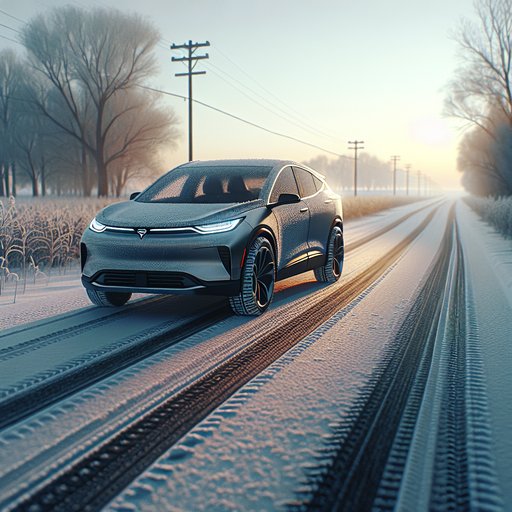
We spent two weeks with a 2024 Model Y Long Range AWD through a Midwestern cold snap to assess snow traction, cabin heating, and cold-weather reliability. Our car ran 19-inch wheels on true winter tires and saw temps from 28°F to -6°F, with packed snow, fresh powder, and glare ice in the mix.
Test car: dual‑motor AWD Model Y LR (heat pump HVAC, 6.6 in ground clearance, ~75 kWh usable battery), on 255/45R19 Nokian Hakkapeliitta R5 winters at 36 psi cold. Weight with two adults and cargo: ~4,650 lb. Routes included a 70‑mph highway loop, plowed suburban streets, and an empty lot for controlled low‑μ testing. Ambient ranged from 28°F down to -6°F with windchill below -15°F.
Baseline efficiency in mild fall weather was 260–280 Wh/mi at 65 mph. In our winter loop at 15°F with HVAC set to 70°F Auto, consumption rose to 330–360 Wh/mi. Real‑world highway range dropped to 210–240 miles on 19s (25–35% down from warm weather), depending on wind and precipitation. Preheating the cabin and battery via Scheduled Departure added 1–3 kWh before setting off but preserved regen and stabilized early consumption.
Snow traction is a strong suit with proper tires. On packed snow, 0–30 mph took 5.2 seconds; on fresh 4–6 in powder it stretched to 6.4 s, with stable, drama‑free launches. Torque distribution is quick and unobtrusive; Slip Start helps free the car when lightly stuck without over‑spinning. Steering feel is light but precise; stability control allows modest yaw before trimming power.
Braking on packed snow from 25–0 mph measured 96 ft; on a polished icy section it expanded to 184 ft—still predictable, thanks to progressive ABS. Regen is limited below ~25°F until the pack warms; setting low‑regen and using blended friction braking yielded the smoothest control on slick descents. Heating performance is excellent for an EV. After an overnight -6°F cold soak, the cabin reached 70°F in 7 minutes while driving and 10–12 minutes when preheating from shore power.
The windshield cleared in ~4 minutes with HVAC on Defrost High; mirrors and rear glass heaters worked quickly. Front seats and heated wheel warm fast; rear seat heat is adequate but the third rear position stays cooler until the cabin fully stabilizes. We noted a mild increase in heat pump compressor noise at maximum output—audible but not intrusive. Cold‑weather reliability was solid.
No-start events: none. Doors, handles, and window seals operated normally after freezing rain, though the charge-port door required a brief warm-water de-ice once. Cameras and radar-free vision systems will disable driver aids if covered; the car warned appropriately until we brushed them off. Regeneration was heavily restricted for the first 5–10 miles below 20°F without preconditioning; with Scheduled Departure, full regen returned within minutes.
At a V3 Supercharger at 10°F (battery preconditioned for 25 minutes), a 15–80% session took 36 minutes, peaking at 128 kW and holding 90–110 kW through the middle—slower than warm weather but consistent. Overall, the Model Y performs confidently in winter if you equip quality winter tires and use the built-in preconditioning tools. Traction and stability are excellent, cabin heat is quick and even, and charging remains predictable if you arrive with a warm pack. Watch ground clearance in deep, wind‑blown drifts, keep washer fluid rated for -20°F or lower, and clean cameras regularly.
For snow‑belt drivers needing frequent unplowed-road travel, a taller SUV will go farther off-plow, but for paved winter commuting, this is a robust, efficient choice.












